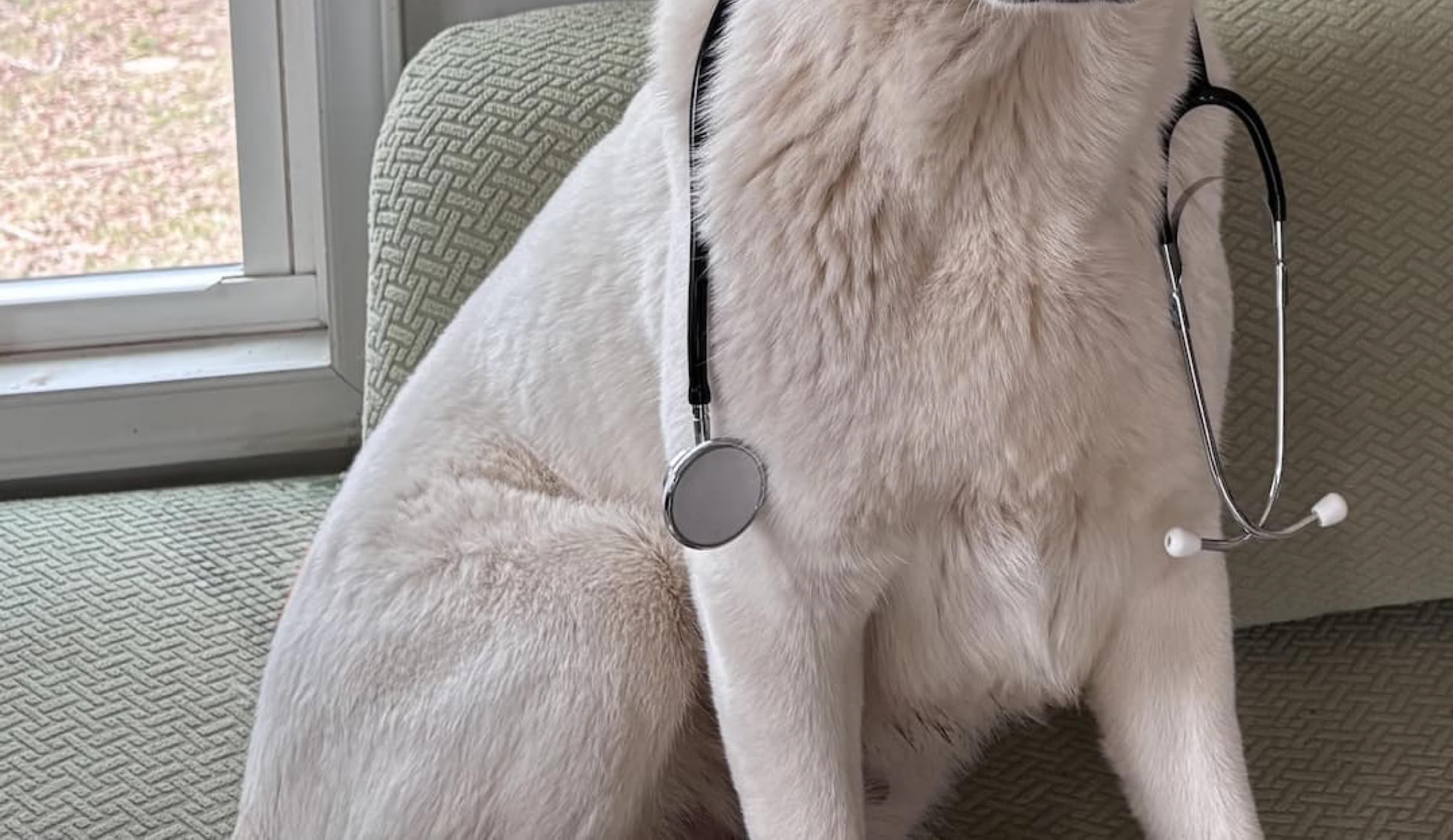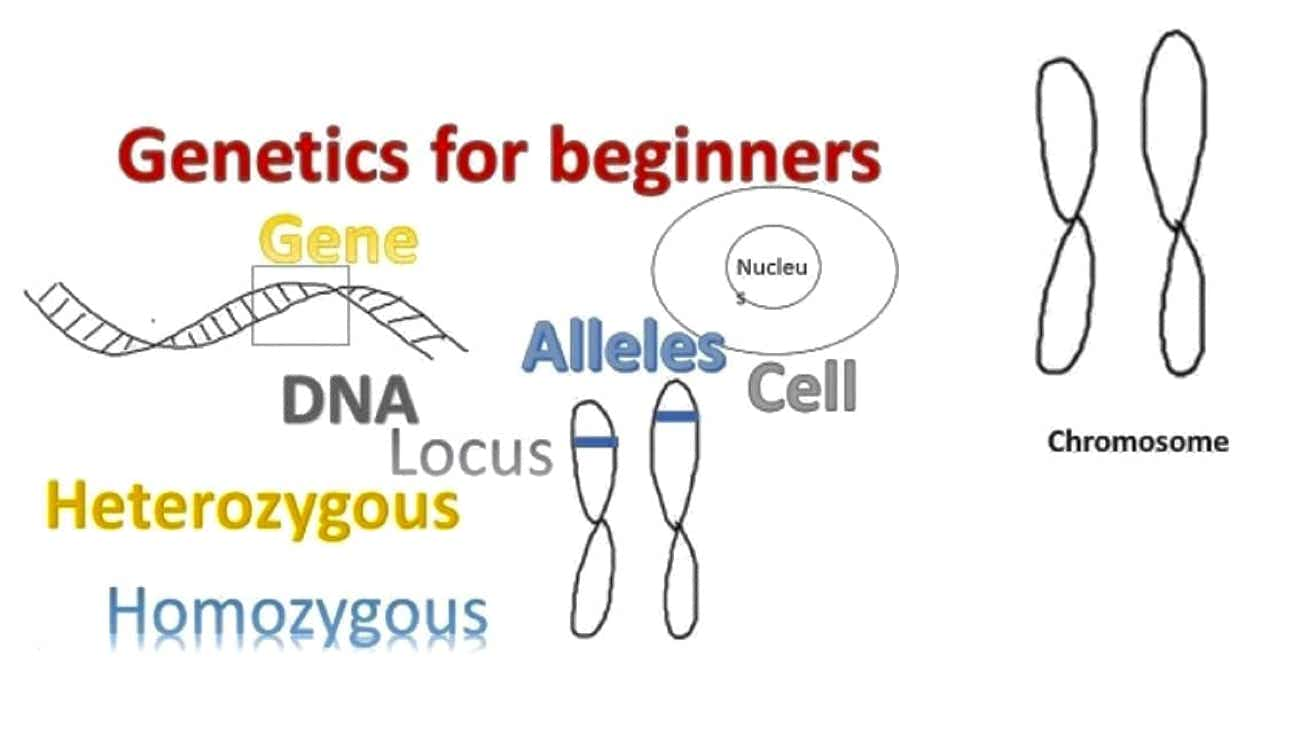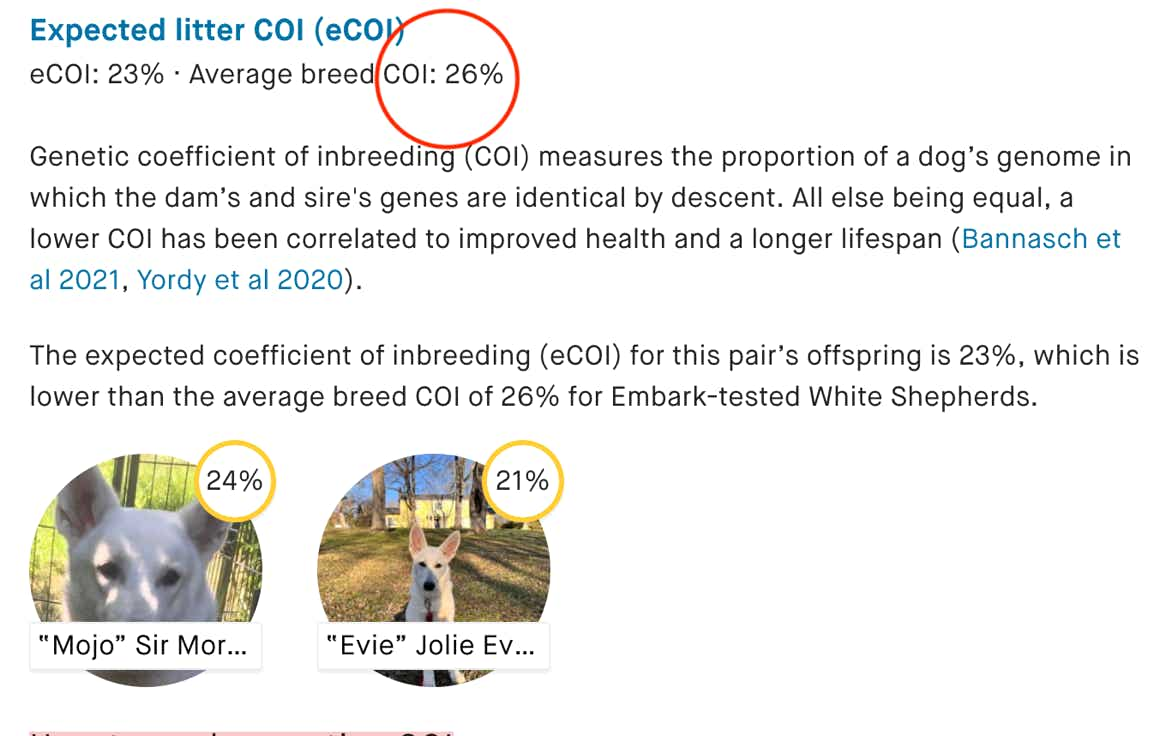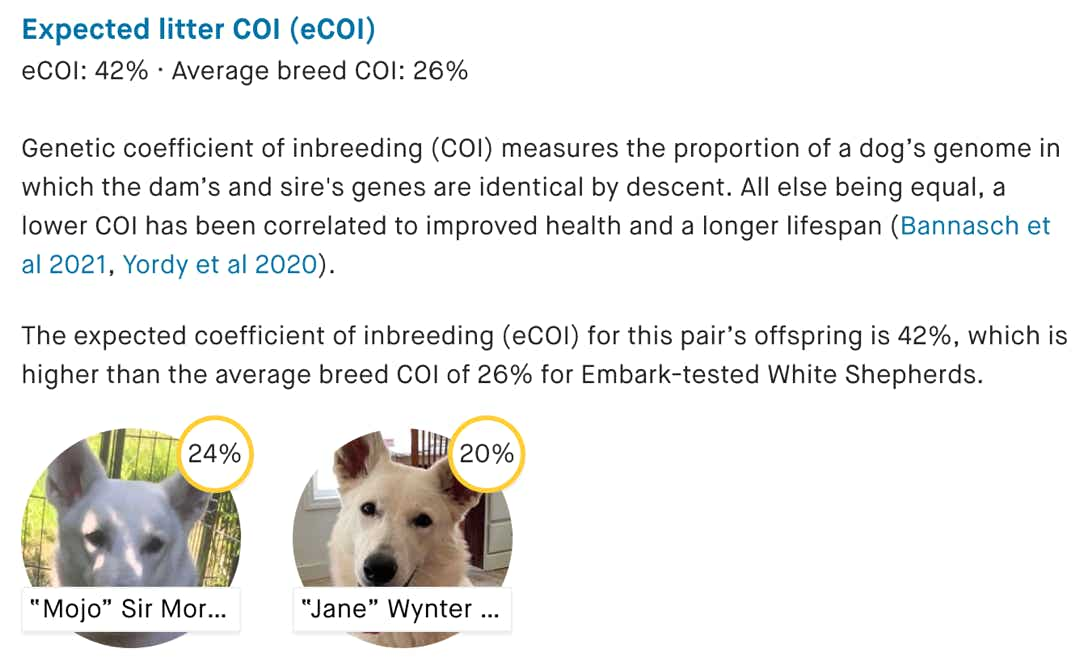

NeverendingDog Project
Preservation of the White Swiss Shepherd

GENETICS AND INBREEDING
The breed is in dire straits. With a closed stud book, the percentage of inbreeding is steadily rising (the average COefficient of Inbreeding, or COI, is now 26% [source: EMBARK, 2025]), and the breed’s diversity is declining rapidly.
Surprisingly, most breeders in the USA are doing nothing about this issue. They continue to breed with the same studs repeatedly, even if those studs are diseased.
This practice is perpetuated because these studs’ frozen semen remain available.
Furthermore, with a closed stud book, the genetic material remains stagnant or even diminishes, never expanding. New alleles cannot be introduced into the breed, and the loss of an allele is irreversible. This reduction in heterozygosity within the genome for that gene has a detrimental impact on the breed’s overall genetic makeup.
What does it mean when the coefficient of inbreeding (COI) is so high, what does it mean that the gene pool will never get larger with a closed stud book and why is it a bad thing that the diversity in the breed decreases?
The COI essentially quantifies the shared ancestors of the dam and the sire, thereby determining the likelihood of their genetic similarity. Dogs belonging to a specific breed exhibit remarkable genetic homogeneity, which is the defining characteristic of the breed. Certain genes, such as coat color and pricked ears, are predetermined within a breed, like the White Swiss Shepherd. Every White Swiss Shepherd inherits two copies of these genes—one from their dam and the other from their sire. However, other genes, like coat length and structure, are not as rigidly fixed. For instance, the coat of a White Swiss Shepherd can be short, long, middle, soft, or wavy, and also adult height and weight vary among individuals.
The two images below show exactly what happens with the expected COI (eCOI) when breeding a pair not related in 5 generations (Mojo x Evie) and when breeding with a father and his daughter (Mojo x Jane). Even though the COI of the individual dog is relatively low, when breeding with a father and daughter the COI of the pairing increases to 42%. The likelihood that their offspring is genetic similar is therefore almost 50% and that is off course to be expected but undesirable.


Genes always occur in pairs, which are collectively known as ‘alleles’. When both alleles in a pair are identical, the individual is said to be ‘homozygous’. Conversely, when the alleles in a pair differ, the individual is referred to as ‘heterozygous’. These terms are also commonly used in a broader context to discuss genetic diversity. Generally, the presence of more homozygous gene pairs leads to reduced diversity, while the presence of more heterozygous gene pairs results in increased diversity. Diversity is a positive aspect that contributes to variation within a breed.
The White Swiss Shepherd breed, like many others, is already highly homozygous, meaning that many of its alleles contain only a single gene type. Consequently, the characteristics produced by these genes will be consistent in all puppies, regardless of the parents used (resulting in no breed diversity). The COI essentially quantifies the likelihood of any allele being homozygous because it inherits an identical gene from both the dam and sire’s lines through a single common ancestor.
With an average in the White Swiss Shepherd breed COI of 26 % it is statistically likely that the genes of the paired dogs are identical.
In March 2016, the Institute of Canine Biology conducted an analysis of data from the MyDogDNA website. This analysis yielded the heterozygosity per breed, the median heterozygosity for all dogs in the database, and the median heterozygosity of mixed-breed dogs. Notably, the heterozygosity of the White Swiss Shepherd was found to be lower than the median heterozygosity of all dogs and that of mixed dogs. This observation suggests that the White Swiss Shepherd breed exhibits a lower level of genetic diversity compared to many other breeds and mixed-breed dogs, which is undoubtedly concerning.

GENETIC HEALTH ISSUES IN THE WHITE SWISS SHEPHERD
Here I will talk more about the health issues recently surfaced, as well explaining why other genetic health issues are still not resolved.
‘New’ genetic diseases we are seeing in the breed include Cerebellar Hypoplasia (CH, shepherd variant), which causes dogs to be uncoordinated and unable to perform fine motor skills. Another recent genetic disease is Copper Toxicosis (CT), a condition where affected dogs have difficulty excreting excess copper from their liver. The liver accumulates more copper until it eventually fails. (Source: Embark) CT is a genetic disease that has only so far been detected in Labrador Retrievers and Dobermans.
If one or both parents are carriers or have the disease, it’s likely that their offspring will also be carriers or have the disease.
This also applies to other (genetic) diseases that have been around for a longer time: Degenerative Myelopathy (DM), Multidrug Resistance 1 (MDR1) drug and Pituitary Dwarfism (PD) (Shepherd type). For more information on DM and Md, I recommend visiting the Embark website. PD is a congenital growth hormone deficiency affecting dogs. Affected dogs are smaller than litter-mates by 2 to 3 months of age and never attain normal adult size. If untreated, affected dogs often die or are humanely euthanized by 5 years of age due to concerns about quality of life.
For years breeding stock has been tested for both DM and MDR1 and more recent also for PD. However, since “okay” carriers can breed if only one of the parents is a carrier, these diseases persist within the breed even after many years.
Inbreeding in the breed also leads to various other health problems, including a decrease in the average litter size and other fertility issues. Additionally, the lifespan and longevity of the breed are under threat.
2025 ©Website Neverendingdog Project designed and built in corporation by Eveline Broeders-Wilke & Sunnyside Sisters Bed and Breakfast. All rights served.
It's not allowed to use pictures and text without consent of Eveline Broeders-Wilke.